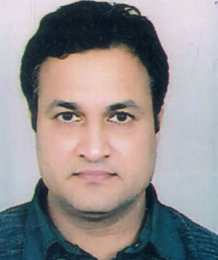.png)
The Department of Zoology was set up in 1966 with Dr. Subhash Saxena as its head and student strength of 45 in B.Sc. Part I. Dr. P.P. Kudesia assumed charge of the department after Dr. Subhash Saxena. He was then joined by Dr. V.V. Kulshrestha, Dr. V.C. Varshney and Dr. Rajeev Mishra. After the retirement of Dr. P.P. Kudesia and Dr. V.V. Kulshrestha The charge of the department passed on to Dr. V. C. Varshney and Dr. Vikas Yadav was appointed as lecturer in the year 2002. The department made rapid progress under the leadership of Dr. V. C. Varshney. Dr. Harendra Gaur joined the department in 2006. Post graduate classes in Zoology were started in 2023. Since 2013. Dr. Vikas Yadav is in charge of the department of zoology. He is ably assisted by Dr. Harendra Gaur, Dr. Harendra Nath Sharma, Dr. Shachi Bharti, Dr. Sunita and non-teaching staff of the department.
Student and teacher strength – The department has a current student strength of approximately 300 and 4 posts of teachers are sanctioned.
Curriculum planning and implementation – Teachers prepare a curriculum plan at the beginning of the year and periodically review the curriculum coverage. Special attention is paid to developing reading, note making and answer writing skills. Extra classes are taken when necessary for adequate course coverage.
Learning resources – The Department of Zoology is one of the best departments for undergraduate and postgraduate studies in Zoology in the university. It has a rich collection of museum specimens, bones, slides, and scientific instruments like microscopes, pH meter, laminar flow cabinet, colony counter, colorimeter, spectrophotometer, gel running apparatus , etc. The departmental library has about 100 books donated by the teachers. The department is also equipped with 2 projectors, computer and sufficient power backup.
Additional study material – In-class notes, additional reading material and appropriate references to online and physical resources are used to enhance the learning experience. Teaching is bilingual and the focus is on understanding concepts rather than rote learning.
Assessment- Regular tests ensure familiarity with question paper pattern and develop better answer writing skills. Under the NEP-2020 mid semester examinations have become a standard part of the assessment and evaluation process.
Learning outcome –The department has a consistent pass percentage of around 80 %.
Best practices –Best practices of the department include ICT enabled teaching, telephonic off campus guidance, E-learning through ‘WhatsApp’ groups and open discussions to identify weaknesses and appropriate corrective measures. Group discussions are used as tools to encourage critical thinking. Final year students undertake a research project which encourages critical thinking and teaches them the nuances of academic writing. Teachers guide students to take up initiatives like ‘Zoofest’ an annual cultural festival of the department and field visits to tissue culture laboratory, apiculture, pisciculture and poultry farming facilities. Alumni engagement and career counselling are the corner stones of the department’s student centric activities.
Feedback from stakeholders – To identify the latent needs of students, feedback is collected from both students and parents. Feedback is analyzed and communicated to the teachers for necessary action.
Research and Publications – The teachers of the department are actively engaged in developing digital content for teaching, participating in seminars and training courses and academic publishing. They have authored several research papers, reviews, proceeding of seminars and book chapters. The teachers have also authored several bilingual books which are particularly useful to students with restricted command over the English language.
"
"
"
.png) |
|
Prof.Vikas Yadav
Professor |
.png) |
|
Dr. Harendra Kumar Gaur
Assistant Professor |
 |
|
Dr. Harendra Nath Sharma
Assistant Professor |